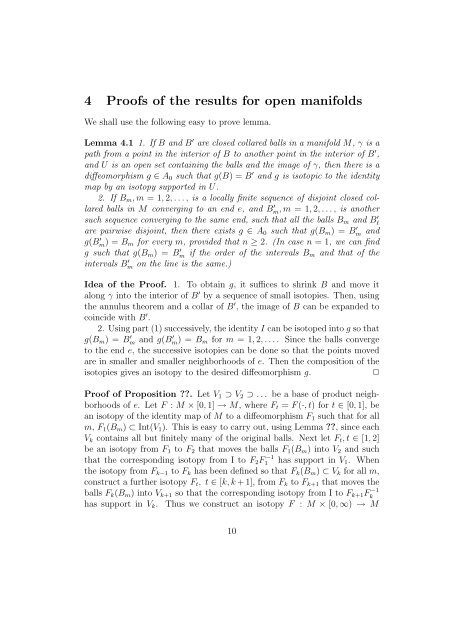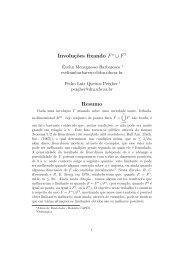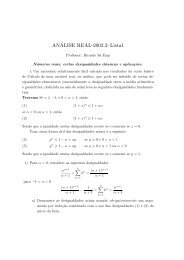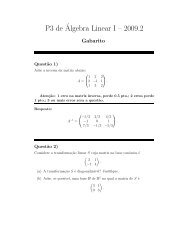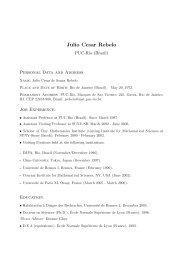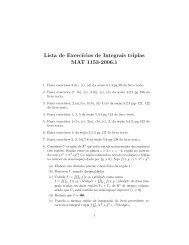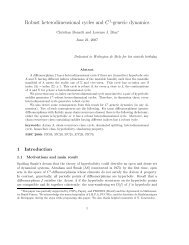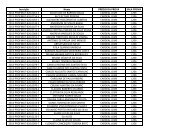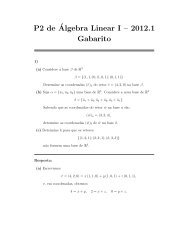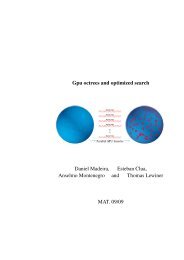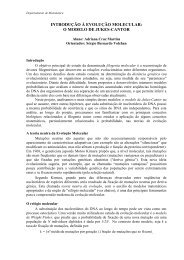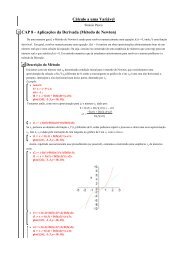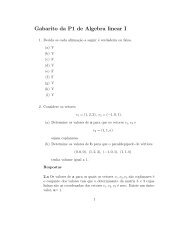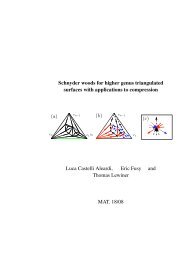NORMAL SUBGROUPS OF DIFFEOMORPHISM AND ...
NORMAL SUBGROUPS OF DIFFEOMORPHISM AND ...
NORMAL SUBGROUPS OF DIFFEOMORPHISM AND ...
You also want an ePaper? Increase the reach of your titles
YUMPU automatically turns print PDFs into web optimized ePapers that Google loves.
4 Proofs of the results for open manifolds<br />
We shall use the following easy to prove lemma.<br />
Lemma 4.1 1. If B and B ′ are closed collared balls in a manifold M, γ is a<br />
path from a point in the interior of B to another point in the interior of B ′ ,<br />
and U is an open set containing the balls and the image of γ, then there is a<br />
diffeomorphism g ∈ A 0 such that g(B) = B ′ and g is isotopic to the identity<br />
map by an isotopy supported in U.<br />
2. If B m , m = 1, 2, . . . , is a locally finite sequence of disjoint closed collared<br />
balls in M converging to an end e, and B ′ m, m = 1, 2, . . . , is another<br />
such sequence converging to the same end, such that all the balls B m and B ′ l<br />
are pairwise disjoint, then there exists g ∈ A 0 such that g(B m ) = B ′ m and<br />
g(B ′ m) = B m for every m, provided that n ≥ 2. (In case n = 1, we can find<br />
g such that g(B m ) = B ′ m if the order of the intervals B m and that of the<br />
intervals B ′ m on the line is the same.)<br />
Idea of the Proof. 1. To obtain g, it suffices to shrink B and move it<br />
along γ into the interior of B ′ by a sequence of small isotopies. Then, using<br />
the annulus theorem and a collar of B ′ , the image of B can be expanded to<br />
coincide with B ′ .<br />
2. Using part (1) successively, the identity I can be isotoped into g so that<br />
g(B m ) = B m ′ and g(B m) ′ = B m for m = 1, 2, . . . . Since the balls converge<br />
to the end e, the successive isotopies can be done so that the points moved<br />
are in smaller and smaller neighborhoods of e. Then the composition of the<br />
isotopies gives an isotopy to the desired diffeomorphism g.<br />
✷<br />
Proof of Proposition ??. Let V 1 ⊃ V 2 ⊃ . . . be a base of product neighborhoods<br />
of e. Let F : M × [0, 1] → M, where F t = F (·, t) for t ∈ [0, 1], be<br />
an isotopy of the identity map of M to a diffeomorphism F 1 such that for all<br />
m, F 1 (B m ) ⊂ Int(V 1 ). This is easy to carry out, using Lemma ??, since each<br />
V k contains all but finitely many of the original balls. Next let F t , t ∈ [1, 2]<br />
be an isotopy from F 1 to F 2 that moves the balls F 1 (B m ) into V 2 and such<br />
that the corresponding isotopy from I to F 2 F1 −1 has support in V 1 . When<br />
the isotopy from F k−1 to F k has been defined so that F k (B m ) ⊂ V k for all m,<br />
construct a further isotopy F t , t ∈ [k, k + 1], from F k to F k+1 that moves the<br />
balls F k (B m ) into V k+1 so that the corresponding isotopy from I to F k+1 F −1<br />
k<br />
has support in V k . Thus we construct an isotopy F : M × [0, ∞) → M<br />
10


